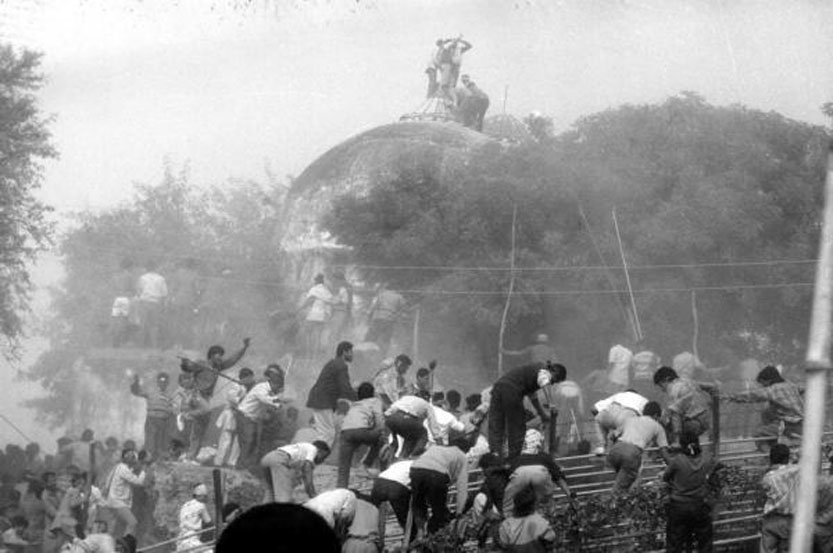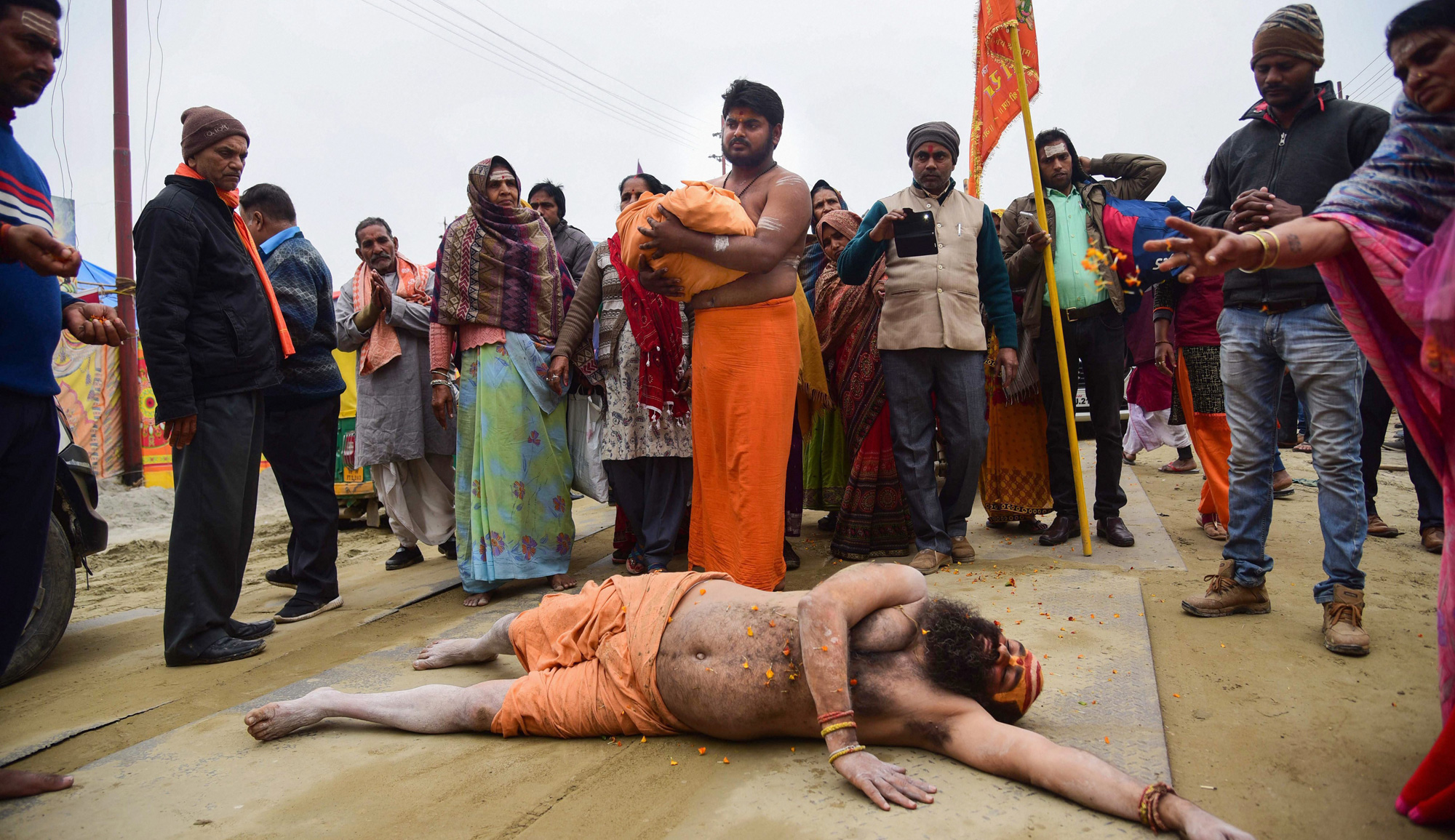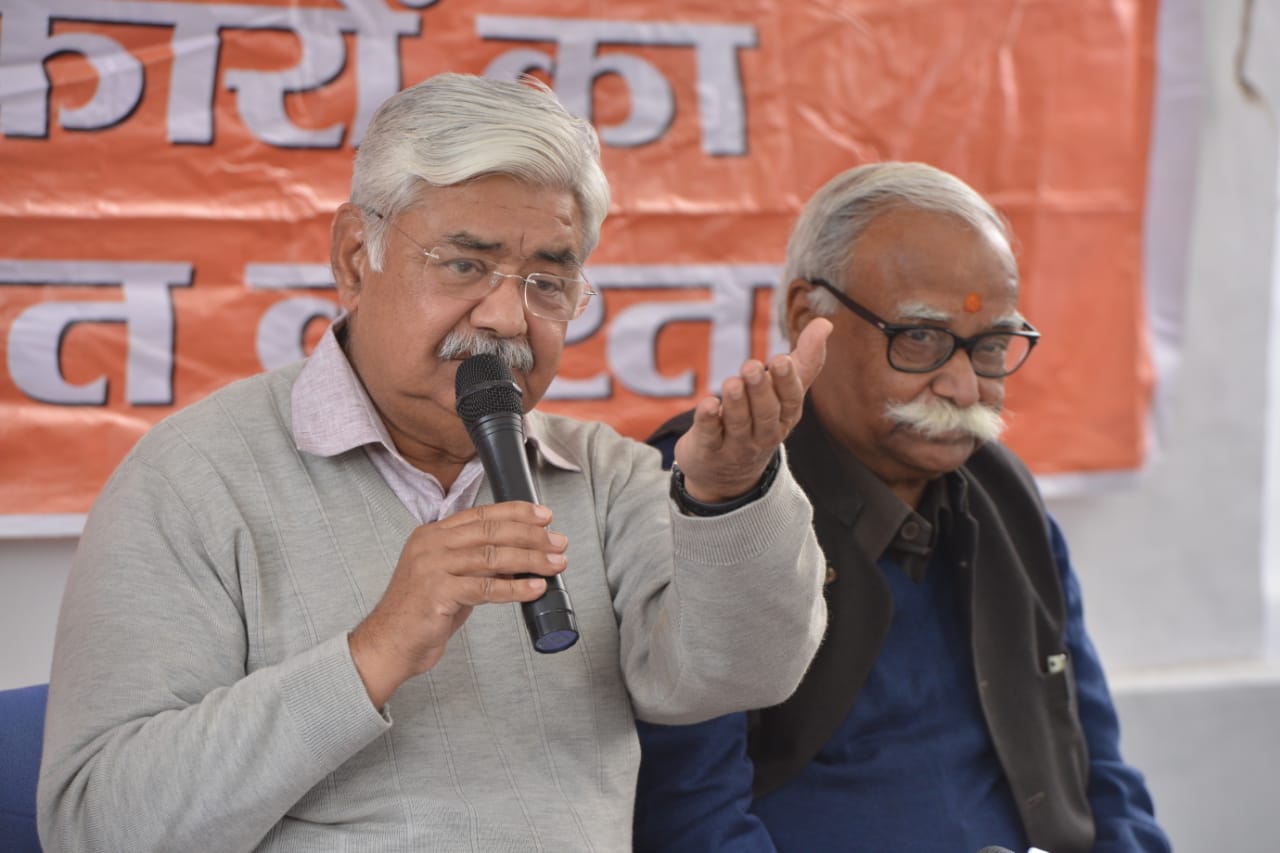The Narendra Modi government’s claim in an application to the Supreme Court that a significant portion of the non-disputed Ayodhya land was owned by the Ramjanmabhoomi Nyas has run into questions.
Moving the court for permission to return the non-disputed 67.39 acres to its “original owners”, the Centre has listed among such owners the Nyas, the Sangh parivar-linked trust for promoting and overseeing the construction of a Ram temple in Ayodhya.
The land was taken over by the Centre in 1993 — through the Acquisition of Certain Area at Ayodhya Act — in the wake of the riots triggered by the Babri Masjid demolition.
Zafaryab Jilani, counsel for the Sunni Central Waqf Board that is a party to the title dispute pending in the Supreme Court now, told The Telegraph that the Nyas was a lessee and projecting it as an original owner in a legal application was wrong.
“We will challenge the Centre’s move if the Supreme Court admits its application. The Centre’s claim that the Ram Janmabhoomi Nyas is the owner of major part of the land is legally wrong. This land (around 42 acres) was given to the Nyas, a wing of the Vishwa Hindu Parishad, in 1991 on lease. But this lease was cancelled by the act of Parliament in 1993. The Nyas was only a lessee,” Jilani said.
But a parivar leader who represents Lord Ram in the court said that “if we were a lessee, that means we were an owner, too”. In the process, he confirmed that the land was leased to them by the then BJP government for the specific purpose of building a museum and other structures. He did not mention a temple.
Legally, the land given on lease usually does not fall in the free-hold category, which means the leaseholder does not enjoy the full rights of the owner.
Triloki Nath Pandey, the “friend” of Ram Lalla Virajman (he represents the baby lord in the court) and a leader of the VHP, said: “In 1991, the BJP government led by Kalyan Singh had given 42 acres spread over three villages to the Nyas on a 99-year lease to develop a museum, a guest house, an auditorium and other structures. Later, we bought or received as gift more land. While the Centre gave compensation to residents and owners of temples whose land was acquired in 1993, we had refused to accept any compensation and so we are demanding our land back. If we were a lessee, that means we were an owner.”
Pandey said the land would be used to build only a museum on the life of Lord Ram, not a Ram temple.
In response to a question from this newspaper, J.P. Tiwari, an Ayodhya-based advocate not connected with the case, said: “A lease stands cancelled automatically the moment a government issues notification for acquisition of that land. The only right of a lessee is to claim compensation on the circle rate. The lease agreement cannot be considered as still effective even if the lessee refuses to take compensation.”
Mahant Satyendra Das, the chief priest of Ram Lalla temple (the disputed temple in Ayodhya), said: “The Modi government must stop playing tricks. The people should know that it is 2.77 acres for which a case is there in the Supreme Court. The makeshift temple of Lord Ram is part of the 0.313 acre.”
He said the land could not be returned to the Nyas because the situation had not changed much since 1993. He pointed out that the act had clearly said that there was “a long-standing dispute relating to the structure (including the premises of the inner and outer courtyards of such structure)”.
The act further reads: “…the dispute has affected the maintenance of public order and harmony between different communities in the country…. It (the land acquisition) is necessary to maintain public order and to promote communal harmony and the spirit of common brotherhood amongst the people of India…. With a view to achieving the aforesaid objectives, it is necessary to acquire certain areas in Ayodhya”.
Some sadhus have expressed their disagreement with the Modi government’s application in the Supreme Court to leave aside 0.313 acre of “disputed area” and release the remaining 67.39 acres.
“Is Modi trying to create a parallel sanctum sanctorum or birth place of Lord Ram? We want the Ram temple on the 2.77-acre (disputed) land…. The central government wants to exclude this site (0.313 acre) so that the Ram Janmabhoomi-Babri Masjid issue can be kept alive and the BJP can continue to take political mileage from it for centuries,” said Mahant Paramahans Das, an Ayodhya sadhu now camping at the Ardh Kumbh venue.













